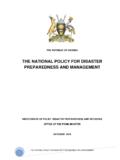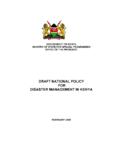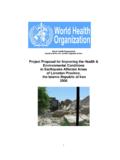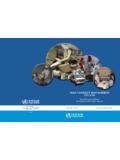Transcription of Heather Do - Disaster Risk Reduction Models - csonet.org
1 Successful Models of Non-Governmental Organizations in Consultative Status: Best Practices on Disaster Risk Reduction By HyeeRyang Heather Do August 2011 ii Disclaimer This research paper is conducted by HyeeRyang Heather Do, currently working towards completing her Master s degree in Public Administration in International Development at Tsinghua University in Beijing, China. The research was conducted in the context of an internship with the NGO Branch of the Department of Economic and Social Affairs. The findings, interpretations, and conclusions expressed herein are those of the author, and do not necessarily reflect the views of the United Nations, or any of its subsidiary bodies or the governments represented. They are solely from HyeeRyang Heather Do. Any questions or suggestions should therefore be discussed or addressed to the author. HyeeRyang Heather Do August 2011 Acknowledgments This paper is inspired by the increase of disasters that are happening and the interest of the DESA/NGO Branch, which seeks to better the participation of NGOs in consultative status with ECOSOC.
2 The author would like to thank all the NGOs who responded with extra information about their programs. Many thanks to all the staff members at the NGO Branch particularly Diego Rumiany for his advice and help. Also, an extended appreciation to all those supported and helped on the editing and moral support. About the Author HyeeRyang Heather Do is from the Republic of Korea, currently studying her Master s degree in Public Administration in International Development at Tsinghua University in Beijing, China. The research was conducted during her internship at the United Nations Headquarters DESA/NGO Branch. HyeeRyang Heather Do can be reached at or alternatively at for any questions, comments or suggestions on this paper. iii Table of Contents Disclaimer ii Acknowledgments ii About the Author ii Acronyms iv Introduction 1 United Nations and Hyogo Framework for Action 1 The Importance of Non- governmental Organizations role in DRR 3 Objective 4 Methodology 4 Models 5 Partnership 6 Community Participation 6 Inclusive Participation 7 Capacity Building 7 Education & Public Awareness 8 Projects 8 Partnership between local and International NGOs 8 Multi- agency Communication & Information Sharing 10 Involvement of Government Partnership 10 Inclusion of Vulnerable Communities 11 Capacity Building 12 Education and Awareness 12 Recommendations &Discussion 13 Stronger Partnership with Local Government 13 Getting
3 The Right Information Flowing at All Levels 14 Capacity Building in Multi- dimensional Approach 14 Look Beyond and Learn 14 Overall 15 Conclusion 15 Appendix 17 NGOs Cited 17 References 18 iv Acronyms CSD Commission on Sustainable Development CSOs Civil Society Organizations DESA Department of Economic and Social Affairs DRM Disaster Risk Management DRR Disaster Risk Reduction ECOSOC Economic and Social Council of the United Nations HFA Hyogo Framework for Action ICRC International Committee of the Red Cross IFRC International Federation of Red Cross and Red Crescent Societies INGOs International Non-governmental Organizations ISRD International Strategy for Disaster Reduction MDGs Millennium Development Goals NGOs Non-governmental Organizations 1 Introduction Disasters are the greatest challenge for development.
4 When it strikes, it claims and destroys lives, livelihoods, property and infrastructure causing disruptions on a national scale, and sometimes, affecting international arena. Amongst the different groups affected by the disasters, the poor suffer the most from the impact of disasters, and put them in even greater losses in such devastation. Moreover, the upheaval progress made in poverty alleviation can be eradicated and development plans could be set back. Furthermore, the experience of disasters worldwide, even in developed countries have shown that the poorest are affected worst by a Disaster as they often live in the highest risk areas, are less able to protect themselves in anticipation of a Disaster and even less able to recover afterwards. Fortunately, disasters are not inevitable. With better support, a Disaster can be averted or its impacts reduced to limit loss and disruption.
5 Ultimately, the most modern paradigm in Disaster management aims to reduce the impact of disasters with the purpose of minimizing vulnerabilities and Disaster risks throughout a society in order to avoid (prevention) or to limit (mitigation and preparedness) the adverse impacts of hazards and to facilitate sustainable development, Disaster risk Reduction (DRR). The DRR is a complex process consisting of political, technical, participatory, and resource mobilization components. Therefore, DRR requires collective wisdom and efforts from national policy and decision makers from various government sectors and from representatives from civil society, including academic institutions, the private sector, and the media (UN/ISDR, 2004). DRR is a cross-cutting and development issue that is an integral part of sustainable development.
6 Therefore, it is an important element for the achievement of the Millennium Development Goals (MDGs). Achieving the MDGs in a sustainable manner requires addressing natural hazard risk and vulnerability into development plans. United Nations and Hyogo Framework for Action The United Nations system is working to support globally to reduce community vulnerability and build resilient nations. The Economic and Social Council of the United 2 Nations (ECOSOC)1 endorsed the founding documents of the International Strategy for Disaster Reduction : the Geneva Mandate and "Strategy for A SAFER WORLD in the 21st CENTURY: Disaster and Risk Reduction " in 1999 (99/63). International Strategy for Disaster Reduction (ISDR) was considered under ECOSOC agenda item on Economic and environmental questions until 2001.
7 ECOSOC Resolution E/2001/35 on ISDR reiterated the resolution 1999/63 of 30 July 1999 entitled International Decade for Natural Disaster Reduction : successor arrangements , and recognized the ISDR as the international platform for Disaster Reduction issues, and urged the international community to provide the necessary resources to the ISDR in order to promote the dissemination of the Disaster Reduction message in view of a successful implementation of the Even though ISDR is not formally discussed at the ECOSOC, related issues are considered in the humanitarian segment of the ECOSOC, and there are numerous ECOSOC Functional Commissions which are relevant to Disaster risk Reduction : United Nations Commission on Sustainable Development (CSD), United Nations Conference on Environment and Development (UNCED), also known as the Earth Summit, and ECOSOC Regional Commissions.
8 They have adopted the themes of Disaster management and vulnerability to be reviewed. Risk management and vulnerability have also been examined in the context of other thematic clusters of CSD, such as water, sanitation, human settlements and drought and desertification. Poverty eradication, protecting and managing the natural resource base, sustainable development are all very relevant to the implementation of the Hyogo Framework for Action (HFA) (2005-2015). The HFA was set up by the United Nations for the substantial Reduction of Disaster losses, in lives and in social, economic and environmental assets of communities and countries . It prioritizes DRR at local and national level and the establishment of strong and functional institutions to manage disasters (UNISDR, 2005). The action plan explicitly identifies the assessment of Disaster risks , early warning systems, enhancement of community resilience capacity, Reduction of hazards and risks , and preparedness strategies and activities 1 ECOSOC coordinates economic, social, and related work of the fourteen United Nations specialized agencies, functional commissions and five regional commissions.
9 It serves as the central forum for discussing international economic and social issues, and for formulating policy recommendations addressed to Member States and the United Nations system. 2 UNISDR website. < > 3 at all levels. The HFA recognizes the role of local level actions in reducing Disaster risks and suggest the institutional arrangements that could help enable this action (UNISDR, 2005). In many countries appropriate national policies and strategies recognize community level actions on DRR and include provisions for the integration of local Disaster management plans into development planning. The Importance of Non-governmental Organizations role in DRR Thousands of civil society organizations (CSOs) throughout the world at the global, regional, and country levels bring attention to development planning.
10 These CSOs include non-governmental organizations (NGOs), trade unions, faith-based organizations, indigenous people movements, foundations and many others. CSOs play an important role in reaching the internationally agreed development goals set out in the United Nations agenda, including the Millennium Development Goals. Strong relationships among NGOs working in the fields of development facilitate and strengthen the contribution towards these goals and other important universal commitments. Therefore, civil society is an essential partner for sustainable urban risk Reduction . Experiences show that community-based approaches offer viable solutions for managing and reducing risks and ensuring sustainable development. CSOs have provided the indispensable link between public authorities and citizens, and are present in vulnerable areas before, during and after emergencies and crises.

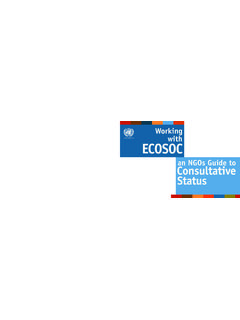


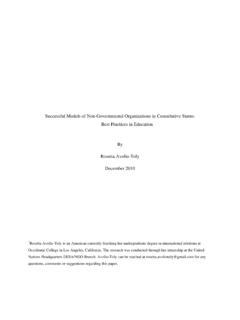
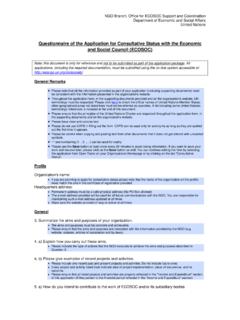

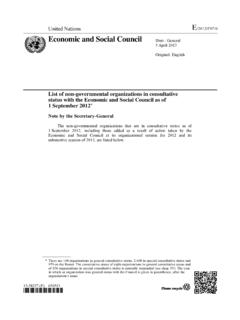
![Disaster Management Act [No. 57 of 2002]](/cache/preview/e/5/d/2/b/3/6/7/thumb-e5d2b36743b64ebe9204d7e874f734ad.jpg)
